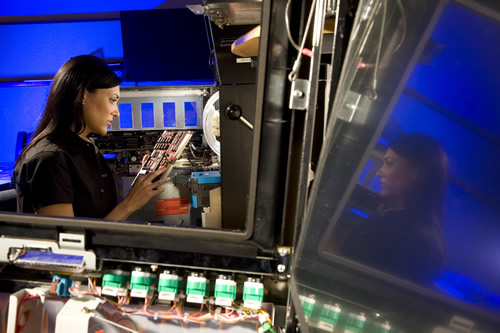Ensuring the gaming industry complies with the law


The world’s gaming markets are in constant flux – new technologies push the boundaries of existing regulations, regulators revise these rules to address these new technologies, governments introduce new laws to raise additional tax revenues, developers design new concepts to meet these new market opportunities… and the cycle goes on. Sitting between the regulators and manufacturers are the testing laboratories, which, as intermediaries, ensure that equipment complies not only with the laws as they are written, but do not exploit any potential loopholes that may cause problems for the regulator further down the line.
“The main consideration is the regulator,” said Martin Britton, managing director of GLI Europe. “The key thing to remember is that each individual jurisdiction has its own regulations that are in place to maintain the public interest and the public trust in that individual jurisdiction.”
GLI, which has 20 laboratory locations across the world, is “absolutely independent”, Britton explained, so its key focus is on what testing needs to be conducted to help the regulator ensure that the devices and systems operating in a regulator’s jurisdiction meet the strict standards it has set.
“Maintaining the highest levels of trust between our lab and the regulator is of utmost importance.” Although compliance with the law is the primary concern for a lab certifying new equipment, Andrew Rosewarne, managing director of testing lab NMi UK, said testing labs should also appreciate the intention of the regulators, even if this is not explicitly stipulated in the written laws.
“Adherence to the spirit of the law is also a key consideration,” he said. “Governments write laws to achieve certain goals and there can be gaps in the regulations that can be advantageous to operators. However, no-one wants to end up on the wrong side of a regulator. Our understanding of the acceptable boundaries is valuable knowledge that our customers appreciate.”
Accredited testing facilities are entrusted by regulators to verify that all testing equipment products adhere to the respective technical standards or regulations in the manner anticipated, said Richard Williamson, senior vice president, regulatory, at BMM Compliance. Any deviations are either corrected by the manufacturers or documented for the regulator to consider when making a final decision.
“Due to the nature of the relationship, the ATF is the liaison between the manufacturer and the regulator and, as such, provides interpretation and consultation with regard to a product’s adherence to the rules,” he said. “It is not uncommon for an ATF to work with the regulator to propose a rule to accommodate a product that meets the spirit of the law but not the letter of the law.”
This feature can be read in full in the April 2012 issue of InterGaming magazine

